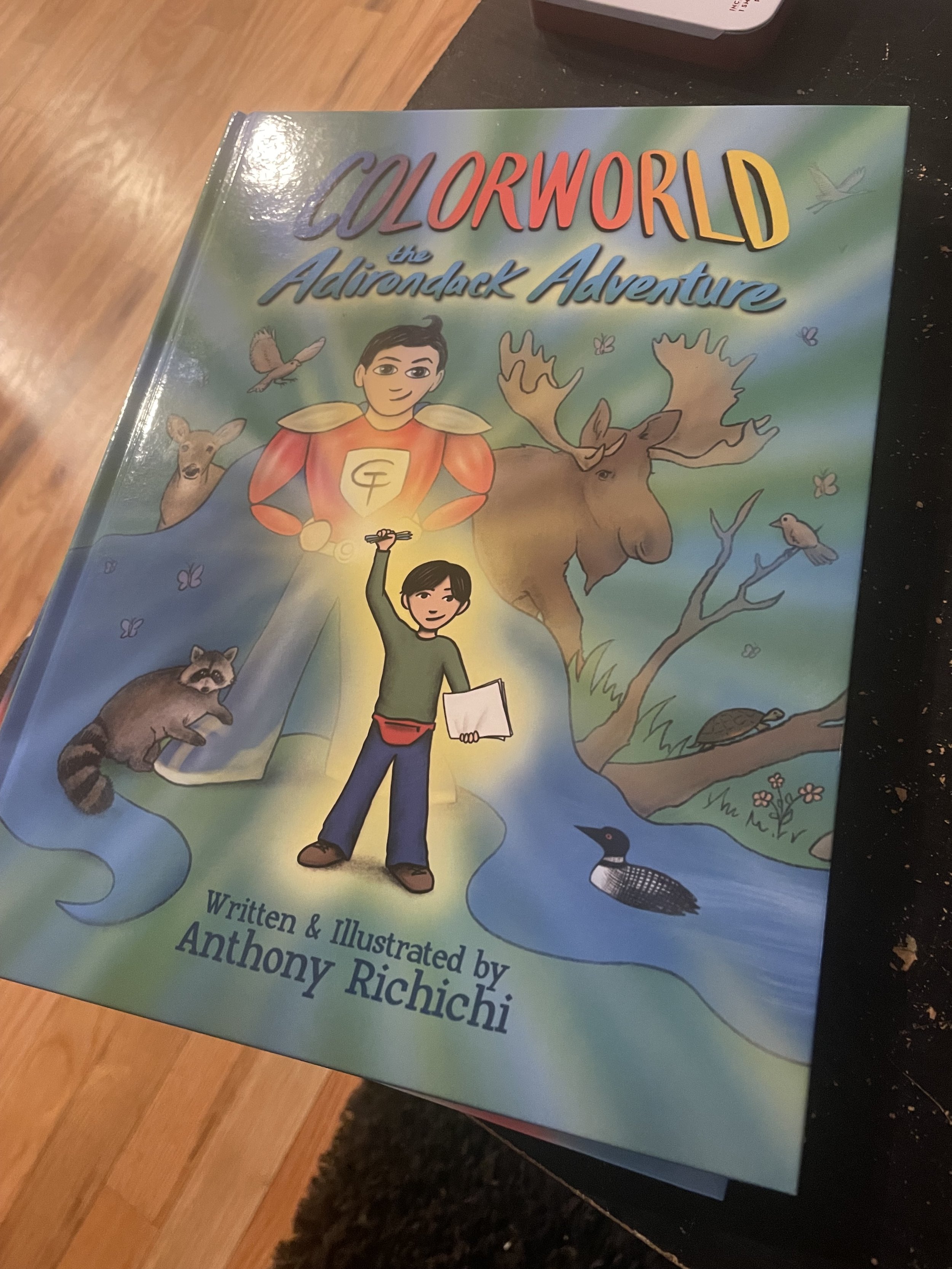Colorworld Live: A Writer’s Perspective
Art is a very subjective activity. It involves taking something in your head and finding ways to replicate it in the world. It can be on a painted canvass, molded sculpture, paper drawing, or written words. And the journey from childhood to adulthood is wrought with challenges to overcome anxious feelings of finding your own artistic style and expression, especially surrounding others’ judgement.
That is what makes Anthony Richichi’s Colorworld story so profoundly important; to show the tumultuous growth challenges of artists from a young age. We meet Henry, the main character, as he is doodling in class, much to the dismay of his teacher. The class is focused on electronic gizmos, portraying paper as archaic. He is ridiculed and bullied for his love of drawing, especially when one of his classmates learns about his imaginary character Captain Tony.
His parents are not much better at instilling a creative mind, too busy on their electronic devices to bother paying attention. But Henry continues on his own imaginative journey, visualizing exciting adventures with Captain Tony. The scene that spurred my own memories of this imaginative experience as a child was Henry laying on the floor with dozens of papers around him, as his parents admonished him to go to bed.
I distinctly remember laying on the floor, pen in hand, writing stories involving many imaginative adventures. Sometimes into the wee hours of the night, much to the chagrin of my own parents. Creativity does not usually have a set time; and learning how to manage our creative impulses while having a good night sleep is important. But I fondly remember those evenings on the floor and transposing the racing thoughts onto paper. I can certainly relate to Henry’s pleas for “just 10 more minutes” to his parents.
Writing and drawing are both incredibly liberating creative outlets for materializing our imaginations, especially for overly busy minds. And being able to transform a blank page into a work of art, whether with words or pictures, is mystifying to outside observers. In fact, in the opening of the show, Anthony Richichi compared artists to magicians; a sentiment that I fully agree.
Back to the play, Henry is told to move his clothes to the attic, a chore that he neglected for a while. But he soon found an amazing discovery: color. Colored pens, to be exact. And the transformative effect on his drawings was quite astonishing.
Captain Tony comes alive, along with many other surprises. His imagination is the only limitation; something that instills a sense of confidence into his life. With a colorful outlet, his world is brighter and full of life.
The play was superbly brought to life by the director, Eric Potter, and his wife, Colleen. The inclusion of a rapidly changing screen behind the set was superb. It transformed Henry’s bedroom into a forest, outer space, or pond, wherever his imagination took him. Costumes and set design were colorful and well made, especially for a low-budget play by the crew at the Wood Theater.
It was a wonderful encapsulation of a young artist’s journey of self-expression in the midst of a society that does not appreciate it. Anthony Richichi has two books in this series, the second of which is a love letter to the Adirondacks. Highly recommend grabbing a copy from Saratoga Springs Publishing and giving it to a young, inspiring artist that needs the confidence to unleash their own creative potential.
